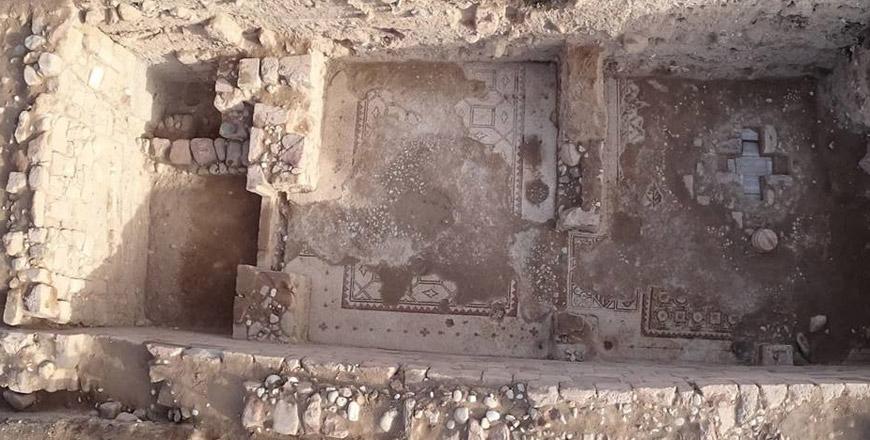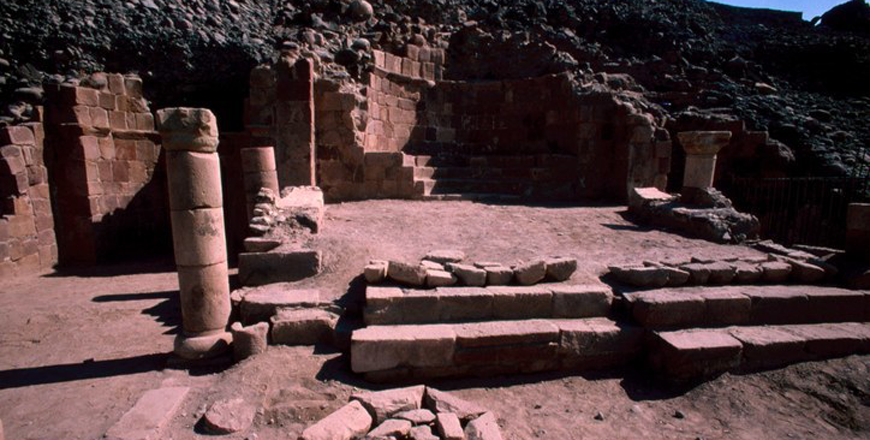You are here
Lecture offers peek into Nabataean presence on Dead Sea shores
By Saeb Rawashdeh - Mar 11,2020 - Last updated at Mar 11,2020

Gold earrings found during excavations at Khirbet Qazone, 1997 (Photo courtesy of T. Springett)
AMMAN — Inscriptions found in Yemen and Oman dating back to the Nabataean period point to the prevalence of frankincense trade between southern Arabian centres and the Levant, according to a Greek archaeologist.
Researchers found a bilingual Nabataean-Sabean inscription from Sirwah near Marib (Yemen) dated to Nabataean King Aretas IV (9 BC-40 AD) and Nabataean painted pottery at Marib and Khor Rori (Oman), which proves the importance of the frankincense trade between the two regions, said Greek archaeologist Konstantinos Politis at the American Centre of Oriental Research on Tuesday.
Delivering a lecture titled “Nabataeans on the Shores of the Dead Sea”, Politis said that the British Museum organised one of the first conferences dedicated to Nabataeans in 2001.
He added that sources from antiquities refer to the area of the Dead Sea as “Salt” or “Asphalt” Sea.
A number of archaeological sites can be found on both sides of the Dead Sea, Politis said, adding that valuable natural resources included salt as a food preservative, bitumen for water-proofing boats, pottery and mummification and sulphur used for cloth bleaching, fumigation and medicine.
“A portion of the salaries paid to Roman soldiers was in salt,” Politis said, adding that balsam oil was produced at the site of Ain Judi on the shores of the Dead Sea.
The strongly fortified farmstead in Buleida in southern Jordan “could be a Nabataean balsam production centre”, he speculated, noting that they found an incense altar there.
“The transport of these goods to Gaza was organised, and Nabataeans used overland packed animal caravans,” he said, adding that Gaza was a “significant port” for export into the Greco-Roman world.
Politis highlighted a depiction of a boat trip to eastern ports on the Dead Sea on the Madaba mosaic map, adding that boats would be taken out of the sea to the shores and cleaned from the salt that would accumulate during the voyage.
“The calcified salt would destroy ships if they were not cleaned,” the archaeologist said.
In Wadi Mujib, another scholar, Taysir Atiyat, located three Nabataean sites, including watch towers and a temple, Politis said.
On the site of Deir Ain Abata where Lot’s cave is located, Politis found Nabataean and Hellenistic pottery shards from the first century AD.
“At Khirbet Qazone on Lisan Peninsula, we found 3,500 looted tombs and began the rescue project in order to preserve the stolen heritage,” he said, noting that the Lisan Peninsula was home to a large Nabataean cemetery.
The orientation of corpses and the type of the graves were “very similar” to cemeteries on the northwestern shore of the Dead Sea in Qumran, Politis noted.
“What we also found were drinking bowls, Roman coins from the first and second centuries AD and jewellery,” Politis said.
These sites on the Dead Sea “show the world a complexity of Nabataean heritage and trade in Jordanian territory”, the scholar noted.
Related Articles
AMMAN — Modern Ghor Safi, located at the southeastern end of the Dead Sea near the lowest point on earth, has been populated for over 12,000
AMMAN — The Dead Sea region has been inhabited since prehistoric times, with thousands of graves dating back to the Neolithic and Bronze Age
AMMAN — The evidence gathered from Petra, the Negev Desert and Dead Sea region proved the presence of Nabataean culture long after 2nd centu



















